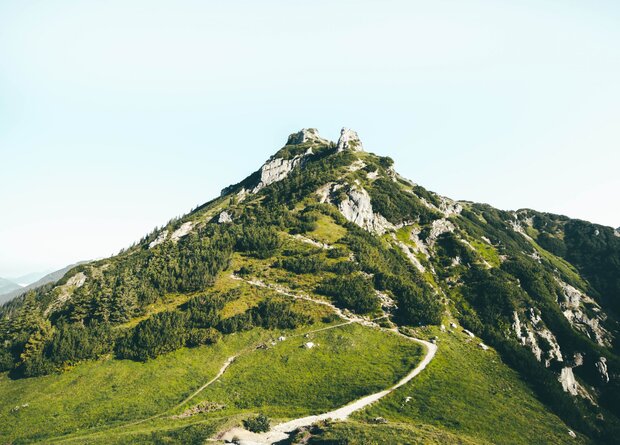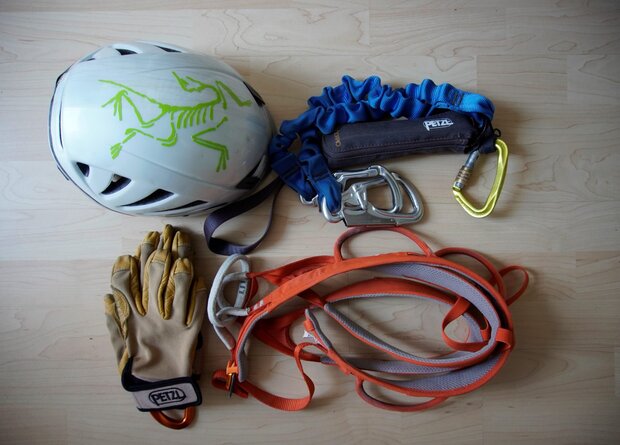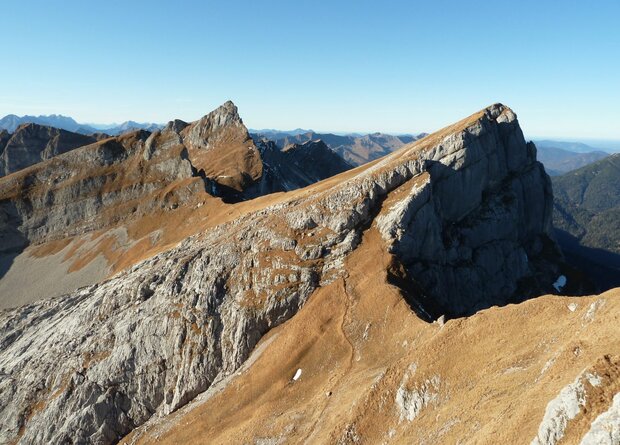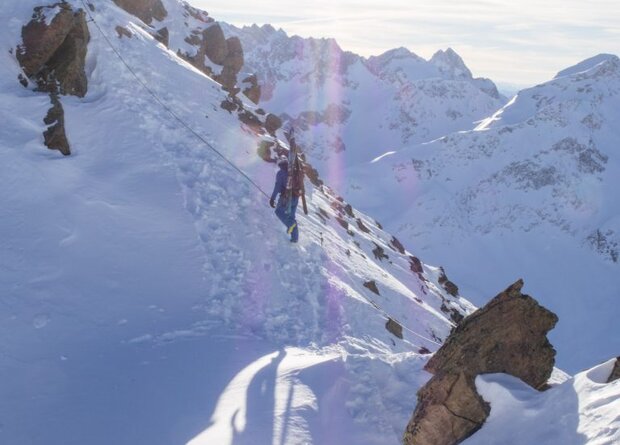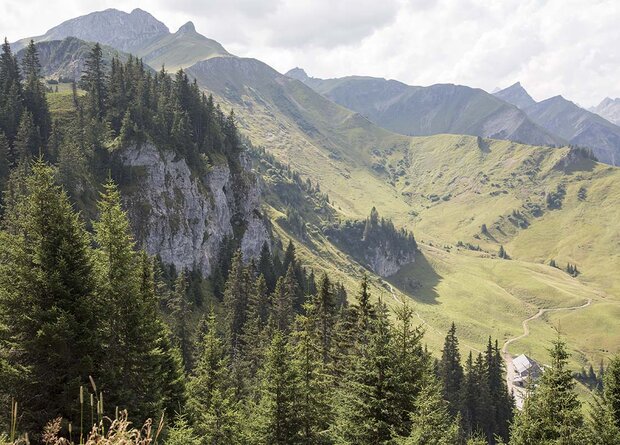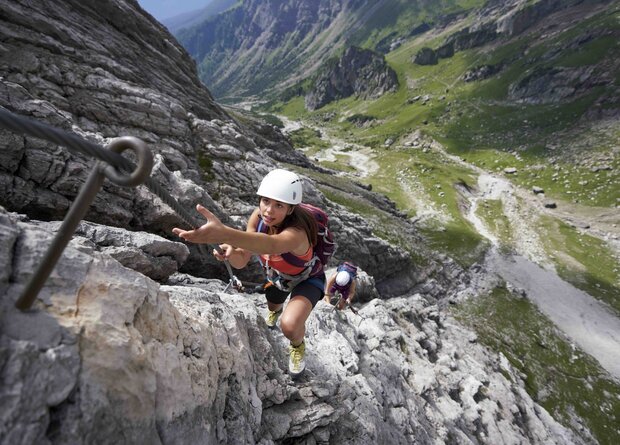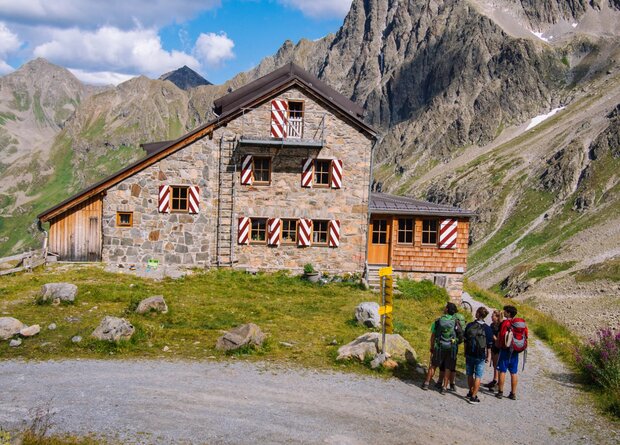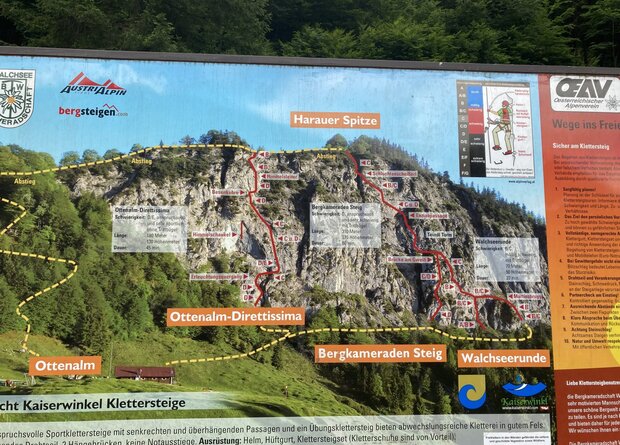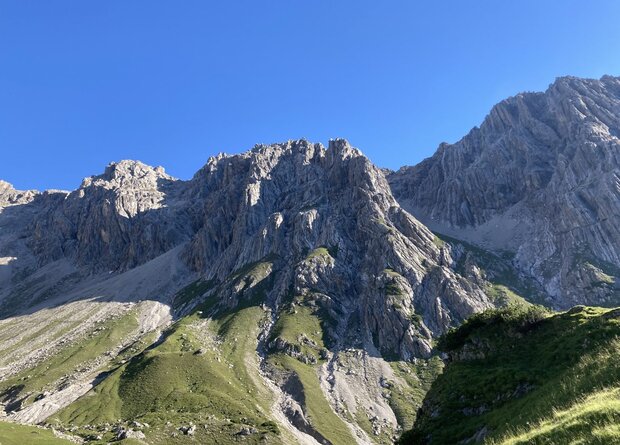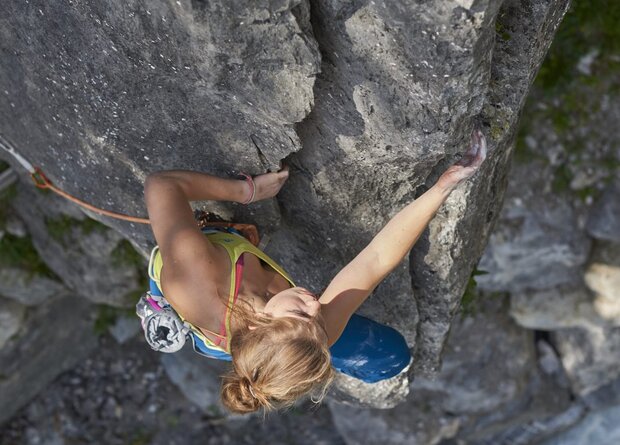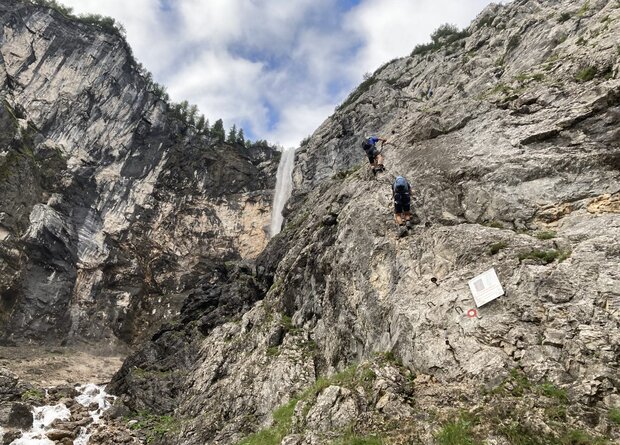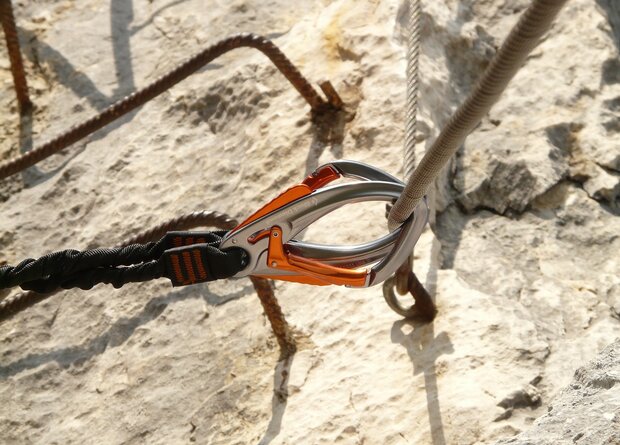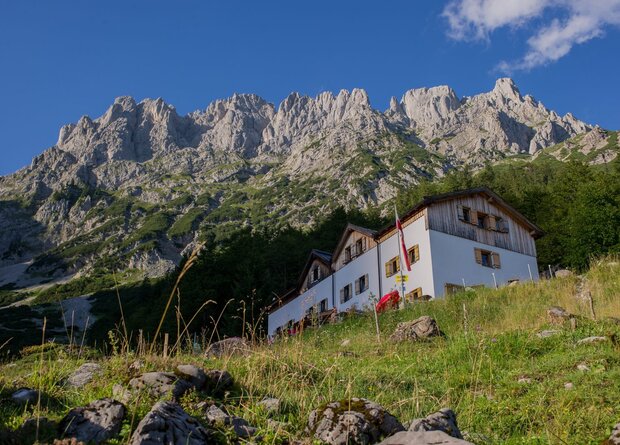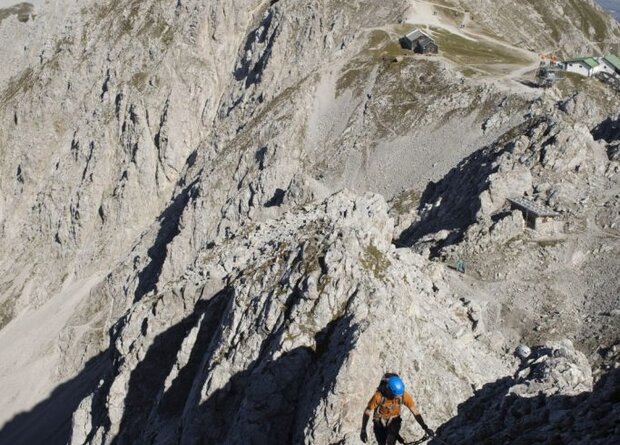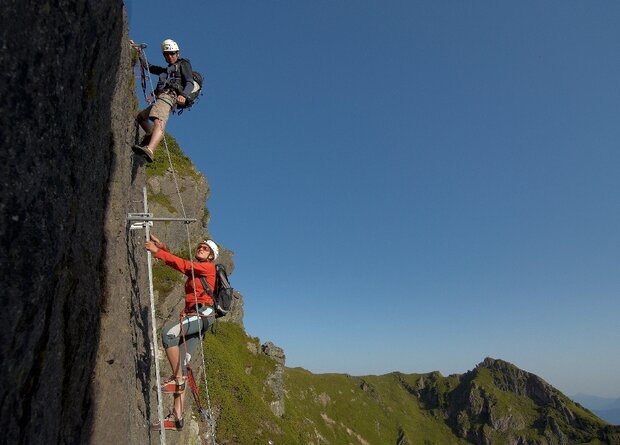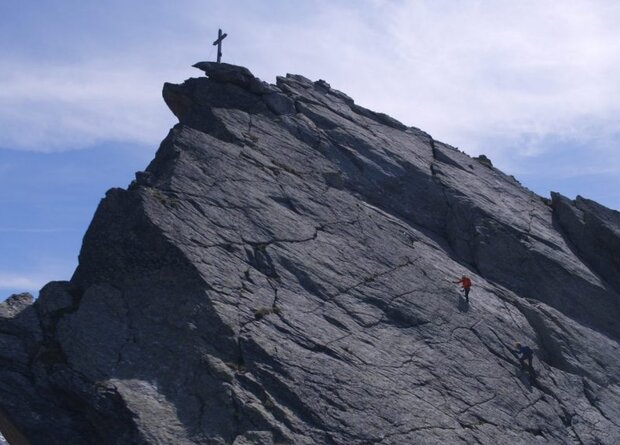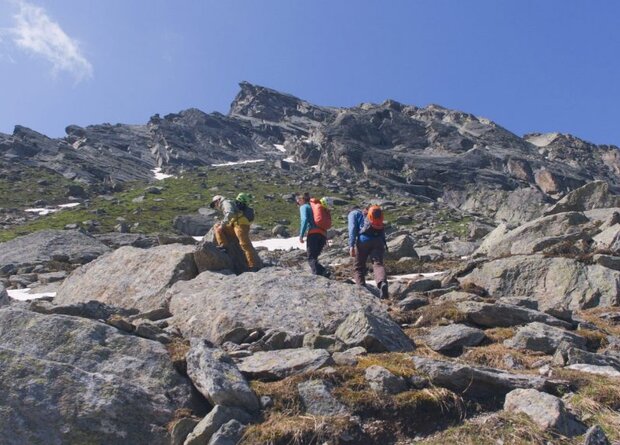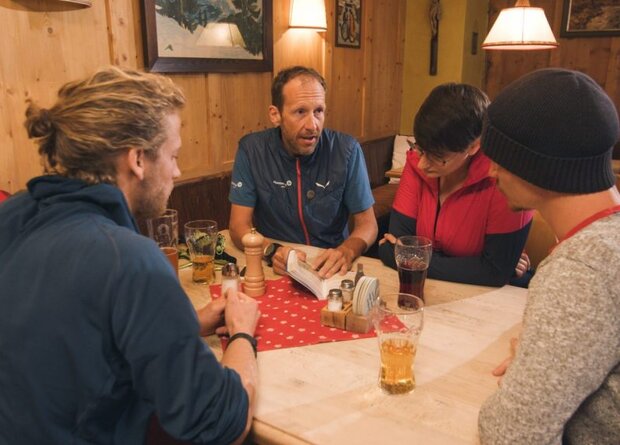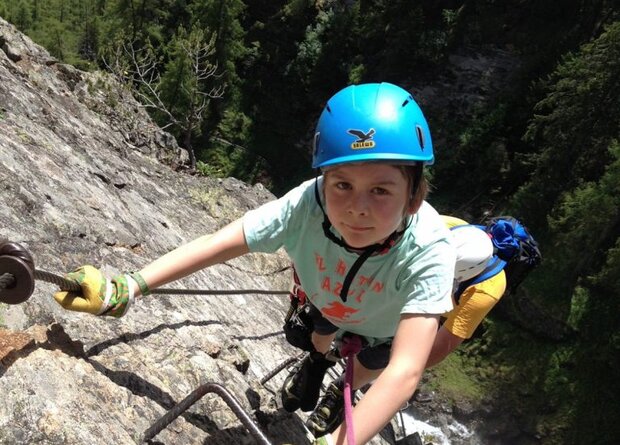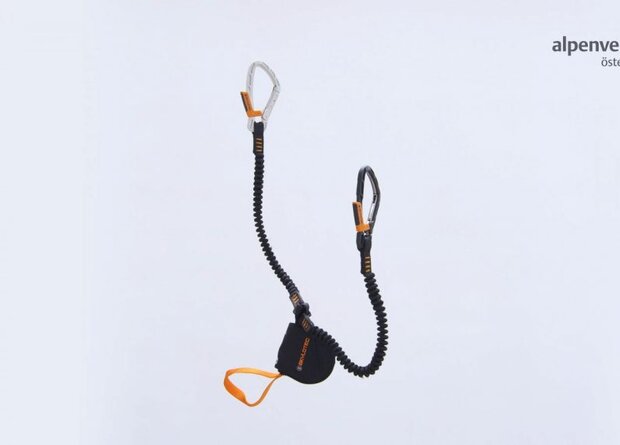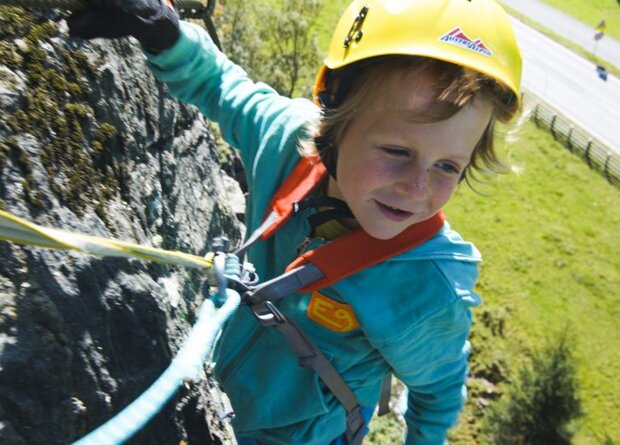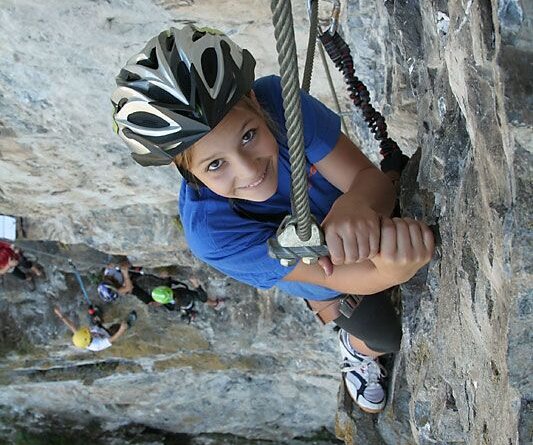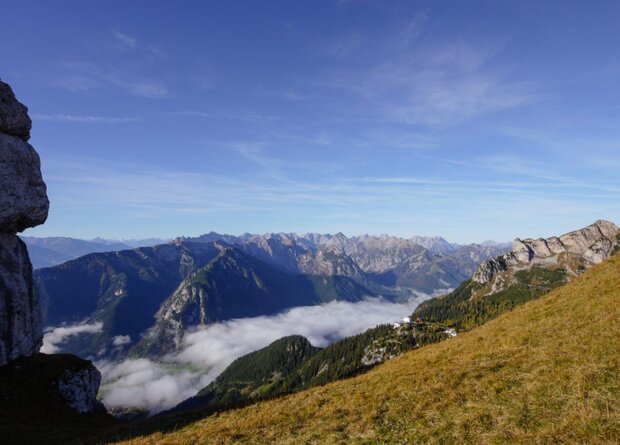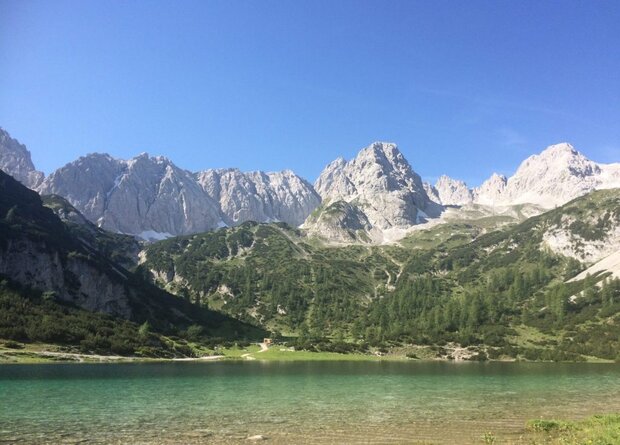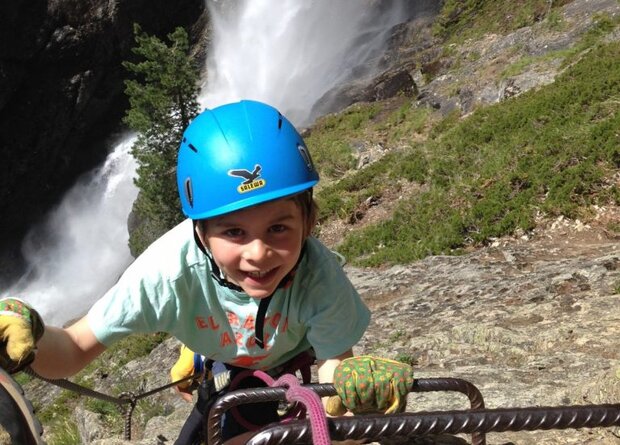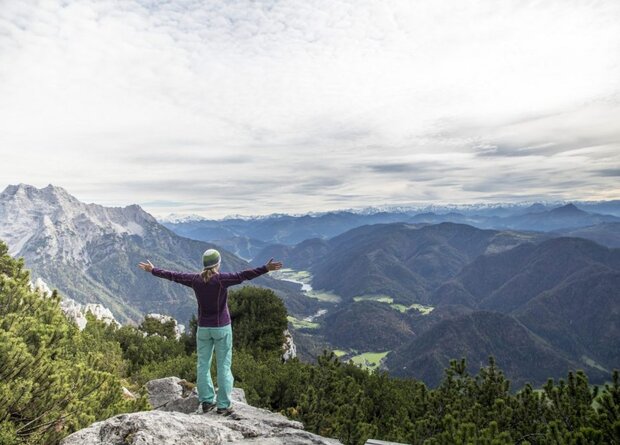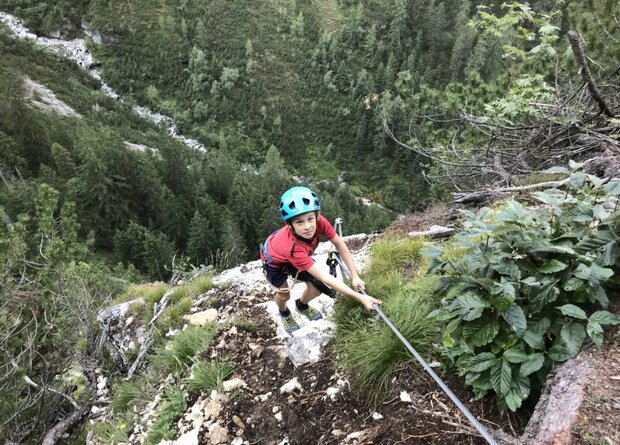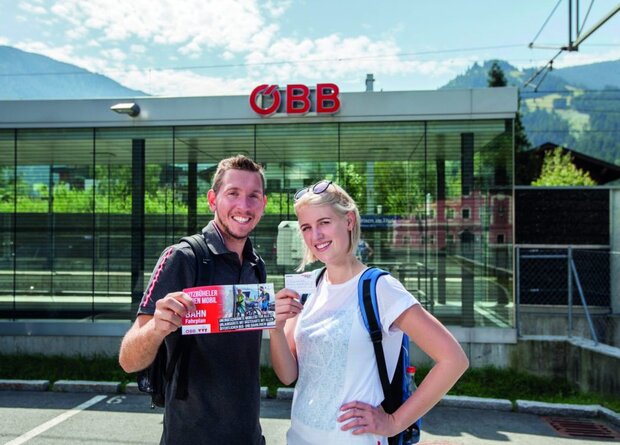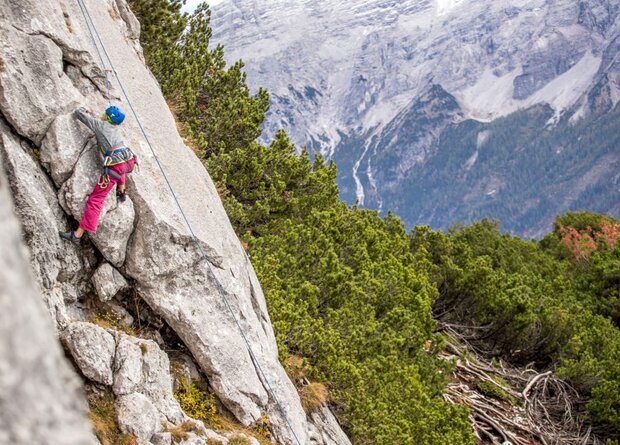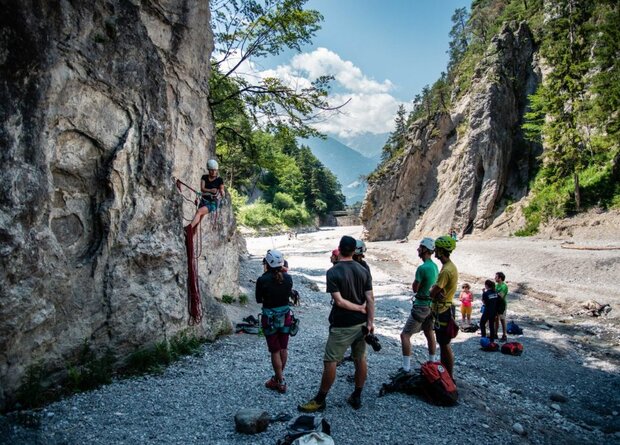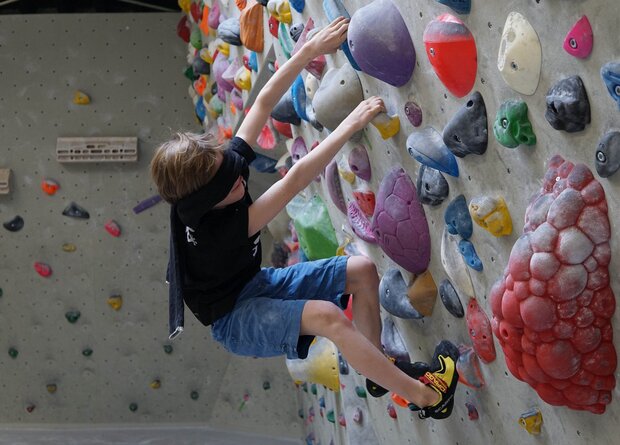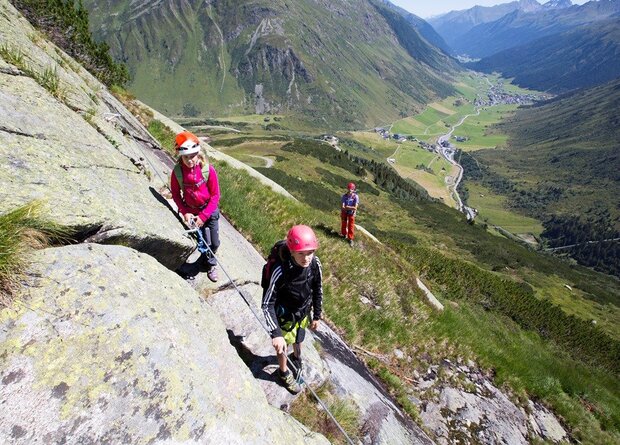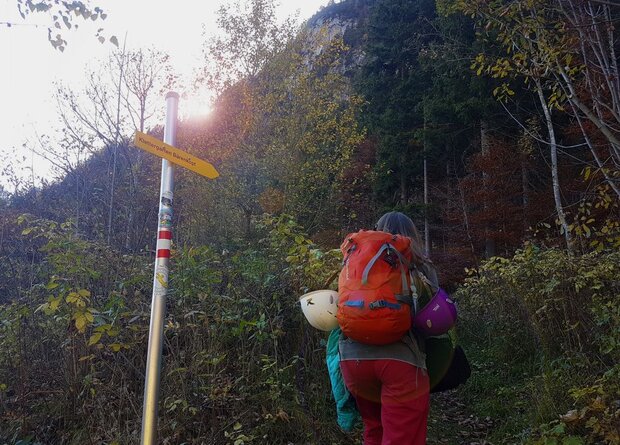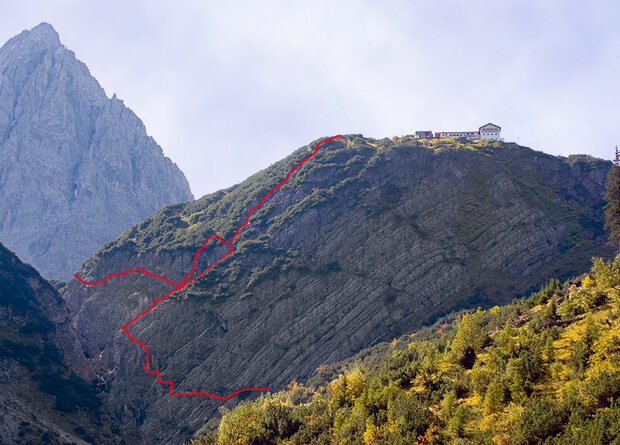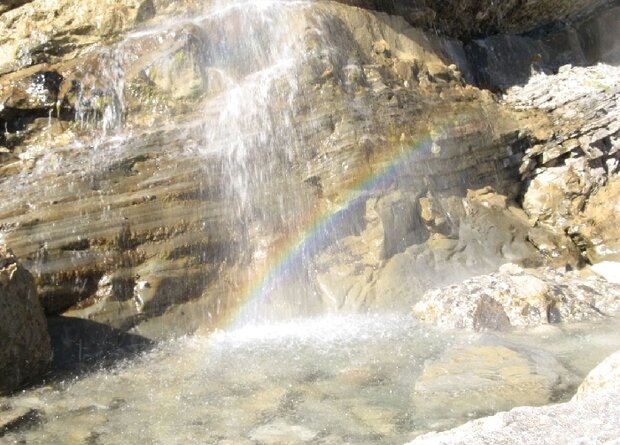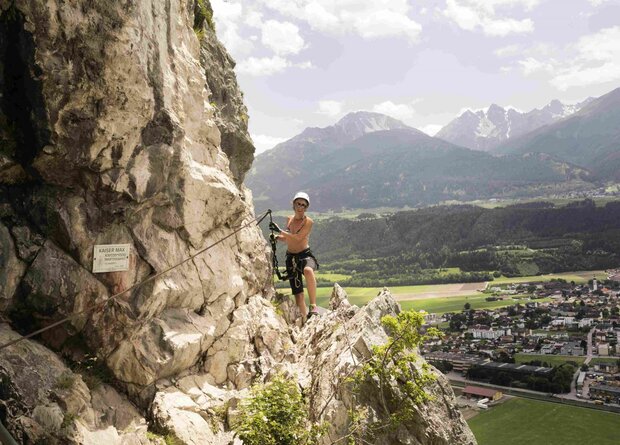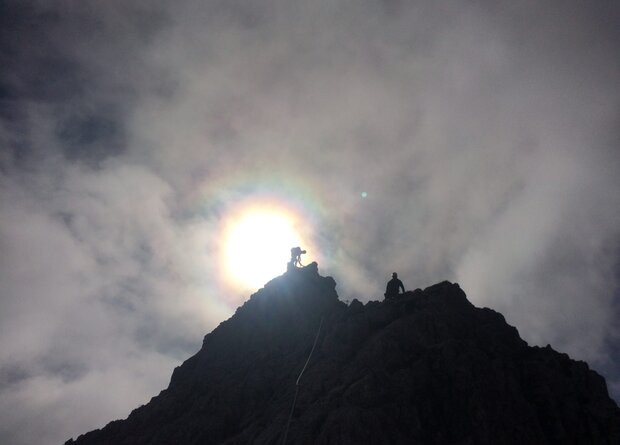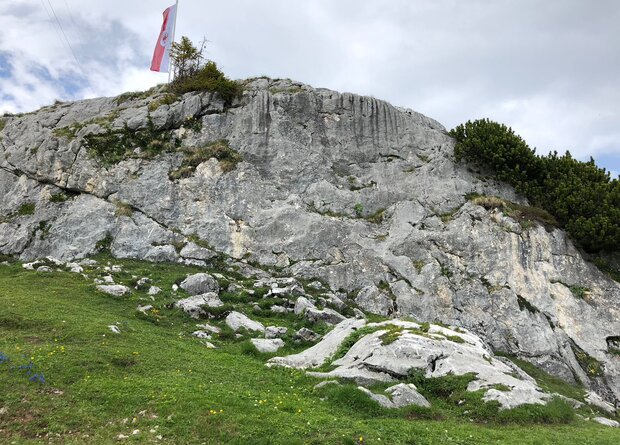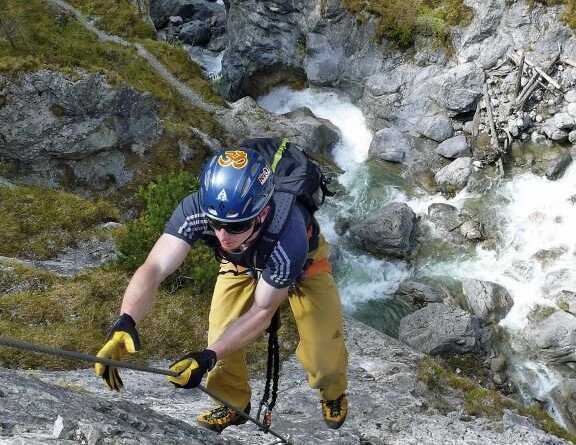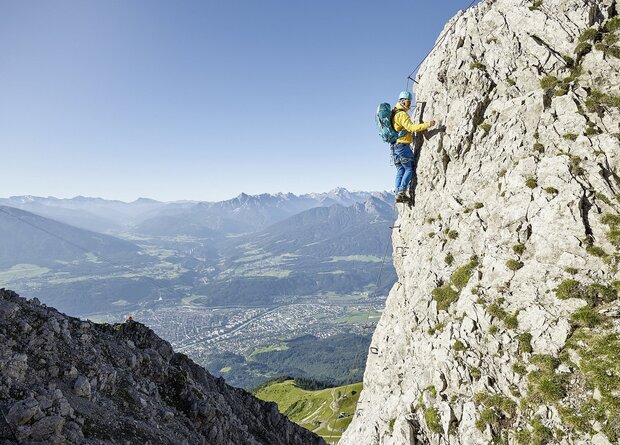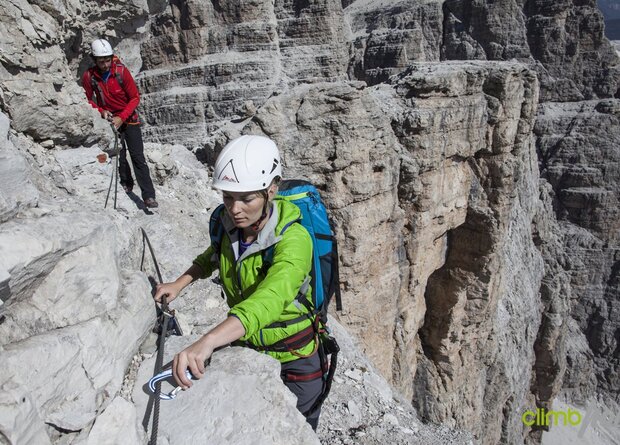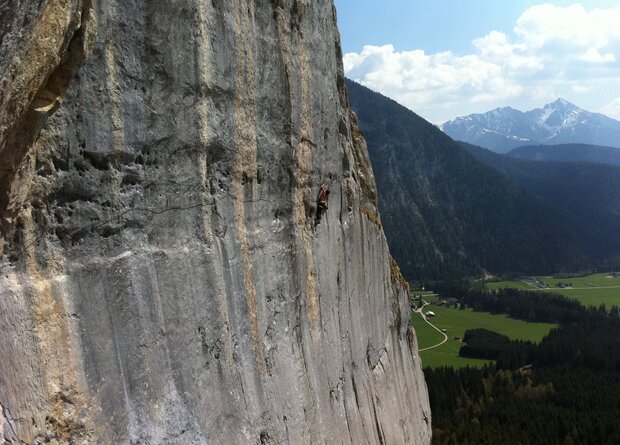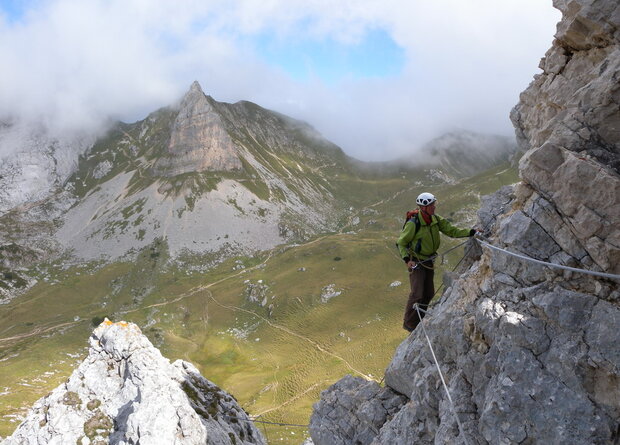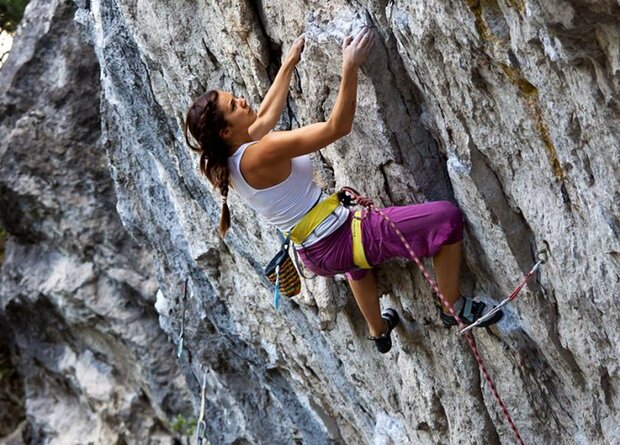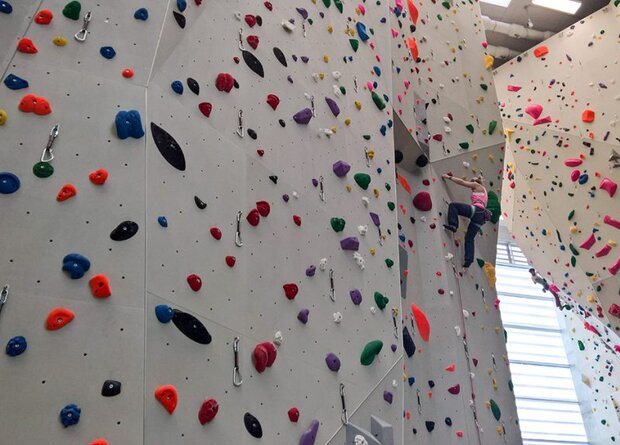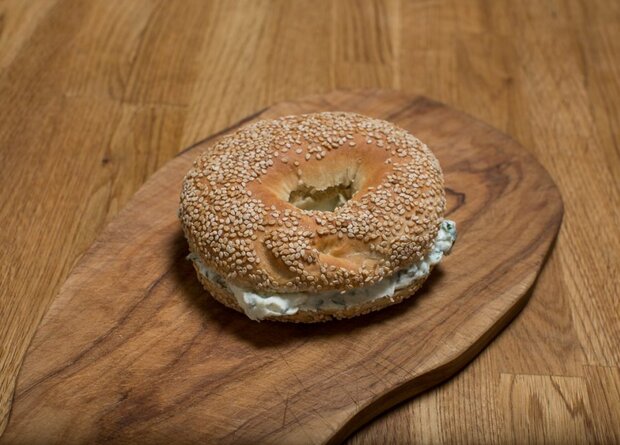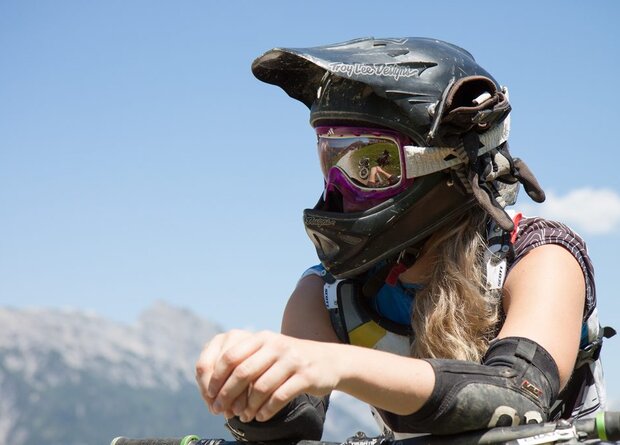From the practice via ferrata at the "Gaudi" hut to the Klamml via ferrata to the Kaiserschützensteig - the "Kaiser" offers the perfect climb for every mountain range offers the perfect climb for every level. For beginners and families, for courageous climbers and enduring mountain enthusiasts. Via Ferrata, viva la vita.
Via ferratas on the Wilder Kaiser - something for everyone
Summer, sun, iron paths: when the temperatures rise, we automatically climb to higher regions. Where the air is not stuffy, but pleasantly fresh, where only the buzzing and humming of bees and bumblebees and the tinkling of cowbells set the pace, where alpine meadows with a colorful splendor of flowers vie for their astonished audience. There, where the peaks rise steeply and their fascinating shapes are sometimes terrifying and sometimes charming. There, where via ferratas on the Wilder Kaiser pave the way for us through the middle of these magnificent walls, a path that is otherwise only granted to climbers. His Majesty "Wilder Kaiser" lets us scramble up iron ladders, climb over clamps and pins, cross wobbly wire rope bridges and enjoy a breathtaking landscape. For some it's iron paths, for us it's Stairways to Heaven - and the Emperor invites us to an audience.
Wilder Kaiser for beginners and families
For beginners, families and anyone who wants to get used to walking with lots of air under their feet.
A practice via ferrata at the Wilder Kaiser, photo: Peter von Felbert
Above the Gaudeamushütte, there is a perfectly secured practice via ferrata for beginners and families. Here you can take your time to practise the techniques for safely climbing via ferratas: The quickest way to open the carabiners and close them again safely. How to place your hiking boots on the rock without slipping off immediately and how to move light-footedly up, down or across with the help of iron clips and pins and wire ropes. If you don't know how to do it properly, you should take a mountain guide, better safe than sorry, and above all you will learn the right technique from scratch.
The Gaudeamushütte, photo: Roland Schonner
At 50 meters, this via ferrata on the Wilder Kaiser is short and therefore ideal terrain for beginners who want to get used to the height and exposure of the iron paths at their leisure - after all, you can repeat the via ferrata as often as you like or join a hike after extensive practice sessions. The practice via ferrata is conveniently located right next to a hiking trail.
Also nice: spend the day on the via ferrata and take a nap in the meadow in between, watch the bees at work and follow the path of the cloud sheep. Once you've had a good workout, it's time for a long stop at the Gaudeamushütte, which is thankfully only a 20-minute walk away. You can literally smell the Kaiserschmarren on the way to the hut - delicious.
Wilder Kaiser for advanced climbers
For all those who already have via ferrata experience, want to climb steep walls and are up for a test of courage. A three-quarter day tour with an adventurous character.
Author Susa Schreiner enjoys the Klamml via ferrata
The starting point, as for the practice via ferrata, is the Wochenbrunner Alm, where you can hardly get enough of the imposing summit scenery of the Kaiser Mountains. From here, head towards the Gaudeamushütte at a leisurely pace. Leave the hut on your right - your route leads over the "Marmot Rock" towards the start of the via ferrata. If you are traveling with kids (who are experienced via ferrata climbers), you can take a break at the marmot rock - maybe you will be lucky enough to see a few climbers pushing themselves up the rock. The wooden benches invite you to take a break and enjoy a snack. After a final refreshment, the route continues uphill. The terrain becomes rougher and more rocky - the start of the Klamml via ferrata is soon reached. Here at the latest, it's time to put on your helmet: Helmet on, climbing harness on and then climb in powerfully - the Klamml is not one for restraint, it's a real bruiser, in other words: you have to take a courageous and precise approach to the rock, push up and grab hold with your hands. Phew, not so easy, but incredibly exciting. For the next few days, it's all about climbing, scrambling and concentrating. And then there is a rocky corner that you walk around - the view opens up to a rocky gorge with a wire rope bridge across it. Take another deep breath, clip the self-belay into the safety rope and off you go ... A little wobbly and therefore only accessible individually, but super exciting! Via ferrata gloves are definitely helpful here so that your wet hands don't slip off the rope ... On the other side of the bridge, you then climb up the steep wall vertically using iron clamps and ladders. Not for the faint-hearted.
A steep passage on the Klamml via ferrata
But if you enjoy this section, the second part of the climb will get your endorphins dancing. The exit is reached far too quickly - you'll want to climb it all over again.
The Gruttenhütte in the Wilder Kaiser, photo: TVB Wilder Kaiser, Emanuel Adensam
Tip: After so much adrenaline, a long break is important. It's a good thing that the Gruttenhütte is only a short detour away. The last section back to the Wochenbrunner Alm leads through a dense forest, where many cairns have been erected in clearings. Hopefully these have survived the harsh winter, otherwise: collect stones and pile them up again.
Wilder Kaiser for experts
For endurance-loving, experienced via ferrata climbers who can also master passages without rope safety.
The Kaiserschützensteig via ferrata, photo: TVB Wilder Kaiser, Maria Luise Handl
1400 vertical meters of via ferrata - a real challenge and only enjoyable if a walking time of 10 to 11 hours is part of your normal repertoire. And because the number of hiking hours alone is not enough, there are also a few exposed passages on the long, energy-sapping tour that have to be tackled without belaying. It should therefore be clear that the Kaiserschützensteig is only for experienced mountain hikers who have knowledge of the high Alps and do not lose their nerve even with a lot of air under their soles.
Incidentally, the Kaiserschützensteig was built in 1987 to commemorate the victims of the First and Second World Wars.
The starting point for the tour is the Hans-Berger-Haus in the Kaisertal valley. You should definitely stay overnight, as you can explore the hut's library, have a chat with the lively landlady (also known as the Wild Empress) or simply watch the Tibetan prayer flags play with the wind while enjoying a glass of wine. We recommend reserving camp beds in the Gruttenhütte for the via ferrata day. Then your tired legs won't have to make the final descent to the Wochenbrunner Alm, or all the way down into the valley, and you can enjoy another sunset on the hut terrace and master the last section into the valley the next day with renewed strength. The Kaiserschützensteig is definitely a majestic tour that can be extended to a weekend trip with two overnight stays in two huts. Please only go when the weather is very stable and when you are sure that the paths are free of ice and snow.
Tip: At the end of June, the "mountains are on fire" again at the solstice. There are particularly many and particularly impressive solstice fires on both sides of the valley in the Wilder Kaiser. If you like, you can take the cable car up to the top on the solstice evening, have dinner there and watch the fires from above. Alternatively, you can stay at the Landhotel Föhrenhof, located just outside Ellmau. The rooms boast a huge window front with a direct view of the mountains - in case a certain tiredness after strenuous outdoor activities forces you into a horizontal position ... Gourmets should definitely book the half-board, a real highlight, which is of course organic and regional.
